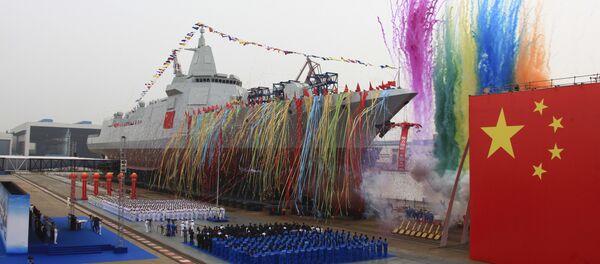This week, the South China Morning Post published a story on a new silent propulsion technology, known as the Integrated Electrical Propulsion System (IEPS), perfected by Chinese military engineers for use aboard the People's Liberation Army Navy's next-generation of nuclear-powered attack (Type 095) and ballistic missile (Type 096) submarines.
Rear Admiral Ma Weiming, a highly respected Chinese naval engineer, confirmed that engineers had developed a production-ready IEPS system. According to Ma, the system has already been fitted aboard the Chinese Navy's newest nuclear submarines. "[Our technology] is now way ahead of the United States, which has also been developing similar technology," he said.
Commenting on the prospects of the Chinese IEPS in an analysis for Sputnik China, military analyst Vasily Kashin emphasized that if this technology is perfected, its most significant implication will be the impact it has on the future of China's strategic nuclear forces.
Meanwhile, he added, "a number of important points regarding the characteristics and purpose of the Chinese system remain unknown."
Laying out the basics of IEPS technology, Kashin explained that "an Integrated Electrical Propulsion System assumes the lack of a mechanical connection between the main power plant (nuclear, gas-turbine, diesel, etc.) and the propulsion device (propeller, waterjet impellor, etc.). Solving this problem allows for a reduction in the noise produced [by the vessel], since it means that there is no direct connection between the power plant and the vessel's hull. It also allows for the more efficient supply of power, freely redistributing energy between propulsion and other systems."
According to Kashin, the nations with the capability to build nuclear submarines can basically be broken down into two groups, depending on the propulsion method used.
"Until recently, American, British, and Russian nuclear submarines have used steam produced by the onboard nuclear power plant for propulsion; the steam would drive a turbo-gear unit, rotating the propeller. At the same time, French and Chinese nuclear submarines have used the principle of electric propulsion. The nuclear power plant set in motion turbines which are not connected to propellers, and which pump all their power into electric generators. The current from these generators, in turn, sets propulsion systems in motion."
Generally, Kashin noted, the latter setup means decreased noise, but at the cost of a drop in maximum speed. Furthermore, "a great deal also depends on the quality of the installation itself, and other factors. Despite the fact that the Chinese began to use electric propulsion on its subs before many other countries, until recently, Chinese nuclear submarines were considered to be among the noisiest."
"As for nuclear submarines, in this case we are not talking about the introduction of a revolutionary electric propulsion system, as much as some very rapid progress in the creation of [such a] system, including through the use of new types of propulsion systems," Kashin noted.
Ultimately, the commentator noted that "if China really achieves a sharp increase in the stealthiness of its nuclear subs, it will close the main gap in its military potential – the weakness of its submarine and anti-submarine forces. If Chinese nuclear subs reach silent operation indicators comparable to Western and Russian subs, it will make sense to rapidly increase the size of its submarine fleet. The fact that such a build-up is being prepared is evidenced by the expansion of the Bohai Shipyard [in Huludao, northeast China] in recent years. According to various sources, it is now possible to build 5-6 nuclear subs at the shipyard simultaneously."
Finally, Kashin explained that the latter development will allow for a rapid growth of the naval component of China's strategic nuclear forces, and alterations in the ratio of nuclear weapons deployed on the ground versus at sea. "It can be assumed that the construction of the prospective large nuclear-powered Type 096 submarines has been timed with the completion of development and testing of the IEPS system, and will now develop at considerable speed."





